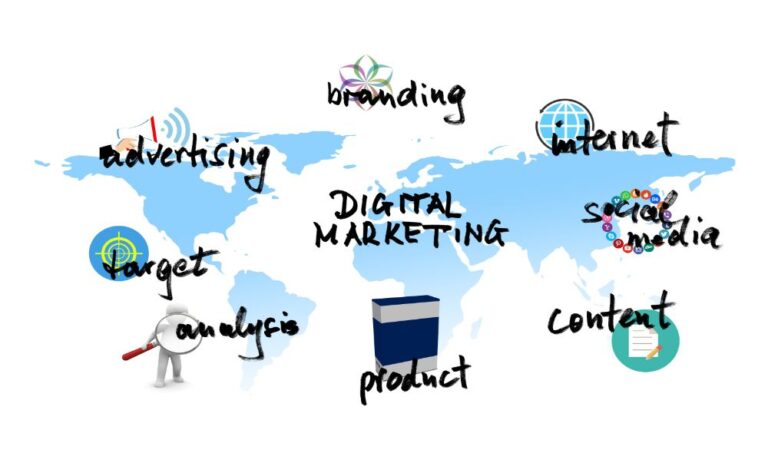3 Effective Ways to Transform The Digital Skills of Your Workforce
The people who are participating in the digital transformation are just as crucial to its success as the underlying technologies, processes, and infrastructure.
The culture of a company and what it offers in terms of learning and development are important components of digital transformation. This is important not just to achieve digital maturity but also to indicate investment in the future of the company’s employees.
Those who are responsible for the advancement of skills need to come up with innovative ways to empower employees while also providing opportunities for them to advance within the company because the push to increase learning and development opportunities is increasing across all industries.
According to the Workplace Learning Report published by LinkedIn, ninety-four percent of working professionals said that they would continue to be loyal to their present company if it invested in their ongoing learning and development.
The question now is how businesses can drive the “people” component of digital transformation. In order to provide an answer to that question, we will need to investigate the process’s three most important components: mentality, skillset, and toolset.
1) Mindset
In terms of digital, the leadership, strategy, and culture of an organization are the focal points of the mindset stage of the transformation process. In this situation, the ultimate objective of the company is to adopt a culture that has digital woven into its very DNA.
It was formerly believed that the slow advancement of digital transformation was due to a lack of buy-in from senior executives; however, it now appears that the involvement of frontline personnel is what is causing problems.
The majority of frontline staff believe the process to be more difficult, despite the fact that CEOs are highly involved in transformational change and are dedicated to it. Despite the fact that this is the case, research conducted by McKinsey & Company reveals that many of the world’s most successful companies find it more difficult to recruit and train tech-savvy leaders than they do brilliant technical frontline workers.
Communication and empowerment are the two components of the solution that will enable you to get the benefits of a smooth process of digital transformation while also ensuring that everyone is engaged in the process.
Communication: Organizations that have senior executives who communicate with employees at all levels of the organization and who communicate with employees across all levels of the organization are much more likely to achieve successful transformations than organizations that do not employ communication.
In point of fact, companies who have communication programs and support systems that are successful are 3.5 times more likely to surpass their competitors. Clear communication on transformation objectives Regular access to information and relevant data Visible engagement from senior leaders Ability of frontline employees to see visible changes in day-to-day work Continuous commitment to staff training, learning, and development across the organization These are some of the things that have been seen to work in terms of communication.
These channels, such as social media channels, change management applications or games, and live feedback tools, should be exploited to engage workers. Digital technologies may be very beneficial in facilitating communication, and these channels should be leveraged to engage staff.
Empowerment While more senior members of a business may be aware of their part in the process of transformation, many frontline employees may find it challenging to understand how they fit into the bigger picture. Not only does giving employees the ability to understand how their participation can assist develop the transformation engage them in the process, but it also enables them to see how the change impacts the performance of the organization. This is a win-win situation.
Involving Human Resources (HR) in this process can help guide it, as HR is in the best position to understand the capabilities of individuals inside the firm as well as the skill gaps that exist. Talent development is one way in which employees can get benefits from the perspective of the HR department, while recruitment is an option for situations in which people already employed by the company do not possess the requisite abilities.
Employees who believe they are valued and recognized by their company are more likely to be happy in their jobs, thus it makes sense for employers to make an investment in their workers. A 15 percent boost in employee engagement can result in a 2 percent rise in margins, according to research conducted by Deloitte. Employee engagement, productivity, and performance are all 14 percent higher in firms who recognize their employees than in those that do not.
2) Skillset
The number of workers in the labor force who possess the appropriate level of digital skills varies greatly depending on the industry. The rising gap in digital skills is costing the economy an additional £63 million each year in the United Kingdom alone. This grim sight is commonplace in every region of the world.
A rising digital skills gap
There is still a significant vacuum to be addressed in the skill sets of enterprises, despite the fact that digital natives and millennials are entering the workforce in increasing numbers. At the moment, seventy percent of the present workforce (including young people who grew up with technology) believes that they do not have the abilities necessary to perform their job. This is worrisome, especially when one considers the fact that millennials and members of Generation Z are the most likely candidates to fill open positions in today’s organizations.
As digital technologies continue to advance, the skills necessary to harness these advancements need to be continuously honed in order to separate the platforms or initiatives that will be successful from those that will not.
72% of CEOs in the United States are planning to invest in solutions that increase virtual collaboration in order to help catalyze their digital transformation initiatives and promote hybrid working models, according to a poll conducted by PwC for the U.S. Remote Work 2021 initiative.
Investing in one’s own workforce is essential for modern firms.
This shortage provides a significant challenge for businesses since individuals who possess the necessary abilities are in high demand across all industries and sectors and have the ability to select the employer of their choice.
As a consequence of this, a large number of highly qualified individuals are in control and will choose to work for businesses that can not only provide them the highest wage package but also the advantages the firm gives, which may include possibilities for learning and growth.
According to the findings of a study conducted by Quantum Workplace, employees are more likely to feel engaged with their jobs and to be attracted to businesses that offer opportunities for ongoing education and professional growth.
Organizations who are forward-thinking and addressing the issue of a skills scarcity are looking at additional methods, in addition to hiring, to address the lack of digital capabilities in-house. One of these approaches is cultivating talent on the inside of the firm.
Even while some businesses have learning and development programs in place, scalability and uniformity are frequently challenges, particularly for those businesses that employ significant numbers of people across the world. In addition, digital abilities are no longer limited to specific divisions inside an organization, such as marketing, because digital is now ingrained throughout all aspects of an organization.
The provision of a certification or accreditation that serves as a standard to which employees are held accountable is essential to the accomplishment of this goal. In other words, their degree of expertise must reach a certain benchmark in order for them to be accredited through a certification program. This guarantees that the entire staff receives certification to assure the same quality of capabilities, and that they are able to lead the digital transformation of your firm by applying the skills that they have gained.
Because accreditation is so valuable, many chiefs of HR departments believe that having staff who are properly certified has a beneficial impact on the profitability of their firm. This view is supported by the fact that certification is becoming increasingly competitive.
Future hires seek for this as part of a learning and development package to indicate that a company is investing in them and their future careers. This is because certification also offers benefits to employees in their day-to-day responsibilities as well as future careers.
3) Toolset
People learn in a variety of unique ways. Online learning allows certain people to study more effectively at their own pace and in their own surroundings, although traditional classroom settings and seminars still have value for some people. For some people, a combination of the two works well as a classroom or workshop setting that combines online learning in a blended model. This is called a blended model.
Online learning has been increasingly popular among working professionals in recent years, coinciding with the proliferation of advanced digital technologies. People want to be able to learn at their own pace and have access to knowledge whenever and wherever they require it because their lives are getting busier and time is becoming more valuable.
The retention rates of skills and knowledge increase by anywhere from 25 to 60 percent when students participate in online learning. A demonstration of the benefits that can be gained from adaptable online educational approaches.
When compared to traditional classroom instruction, online learning results in greater levels of retention. This is because individuals are able to learn at their own pace, while simultaneously having access to resources that they may refer back to again and again as needed. Along with support networks that enable learners to interact with one another, the utilization of videos and the provision of webinars that feature a live question and answer session at the program’s conclusion can provide an enormous amount of value to the program.
Vodafone Case Study
For example, the globally dispersed digital workforce of Vodafone, a leading telecoms brand in the United Kingdom, found that it was necessary to upgrade their skills. This was a particularly urgent concern because the cost and difficulties of running in-person training were getting unsustainable and they were becoming increasingly difficult to attend.
Vodafone improved its current learning and development program by working with the DMI to bring out an initiative that provided the company’s internal talent with access to specialized on-demand educational resources. This was accomplished by upgrading the program.
This worldwide solution is now available to all employees of Vodafone, and it not only increases worker engagement but also contributes to the acceleration of Vodafone’s strategy for digital transformation.
Maintain vigilance and try to re-engage staff members.
Using digital tools provides many different types of organizations with the additional benefit of being able to monitor what and how their employees are learning. It is possible to determine which resources are the most useful by looking at how popular they are.
It is also feasible to monitor the individual progress of each participant, and if someone is falling behind or having difficulty, an intervention can be carried out in the form of something as straightforward as an email to encourage them to get involved again. A similar approach can be taken to congratulate those who are making good progress on their achievements and encourage them to keep expanding their knowledge and skills.
The process of digital transformation cannot and will not be successful without the participation of the employees. The workforce of an organization will be in a better position to drive the digital maturity of the business and elevate it to the ranks of a digital leader if the culture of the organization is created and cultivated to support a digital mindset.
Use L&D to expedite your digital transformation
Make the goals of your digital transformation a living, breathing reality by providing your employees with the skills, knowledge, and resources they need to thrive in their professions and make your digital transformation goals a reality. Your team and leadership will undergo a digital capability transformation as a result of participating in DMI’s industry-leading learning and development programs.







